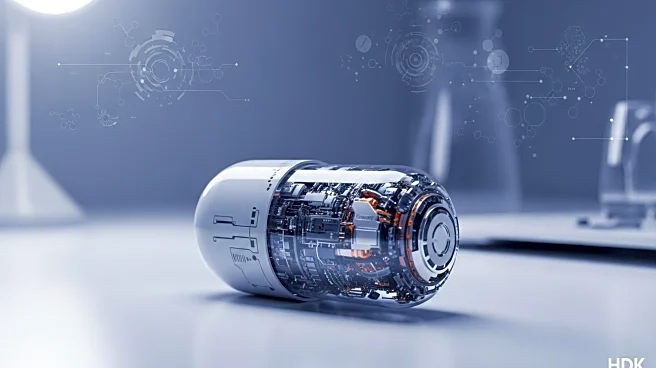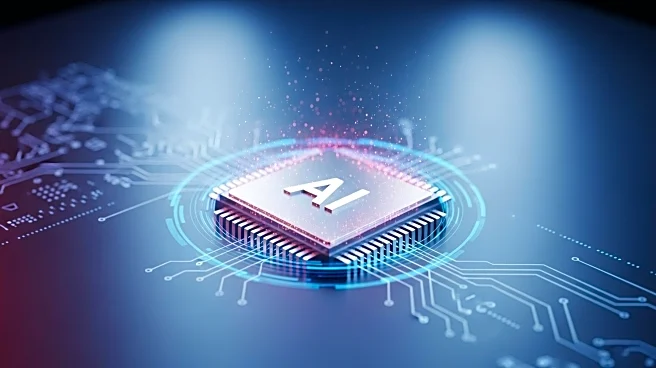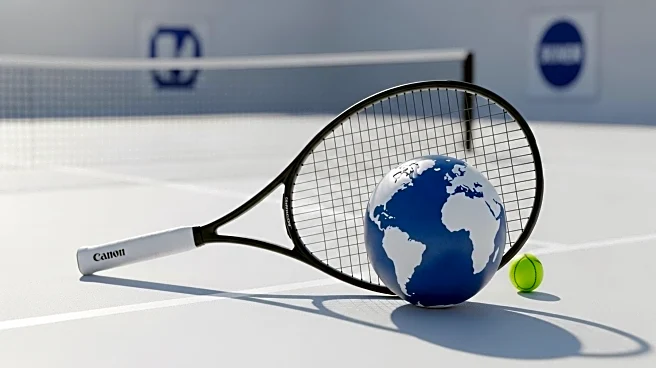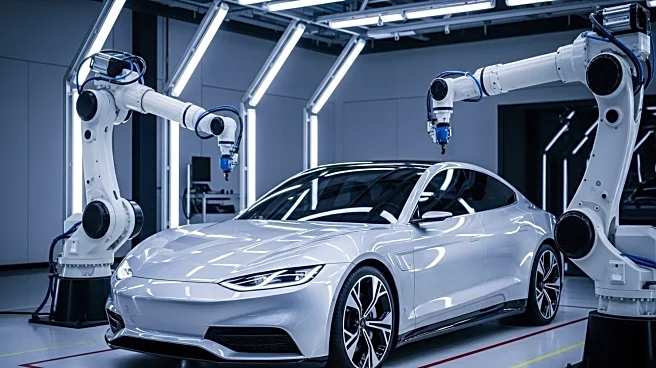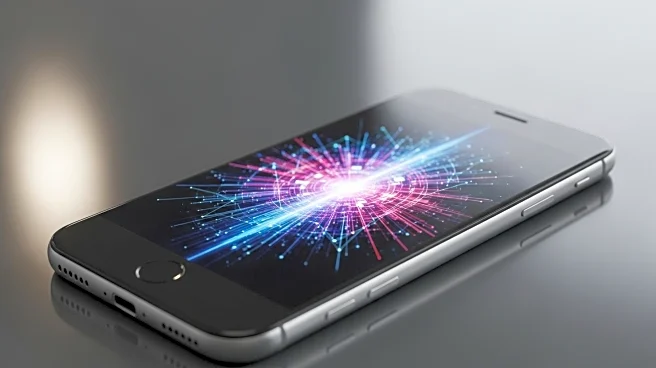What is the story about?
What's Happening?
Researchers in China have developed a swallowable robotic capsule designed to perform liquid biopsies within the gut, offering a less invasive alternative to traditional methods like endoscopies and colonoscopies. The capsule, which is magnetically guided, can collect intestinal fluid samples, providing critical information on gut health, including microbiota composition and digestive enzyme activity. This innovation, detailed in the IEEE Transactions on Biomedical Engineering, aims to reduce the risks associated with tissue biopsies, such as tissue damage or bleeding, and is particularly useful for accessing hard-to-reach areas like the small intestine. The capsule's design allows it to be guided to specific locations within the gut using an external magnetic field, which also triggers a mechanism to collect liquid samples.
Why It's Important?
The development of this swallowable robotic capsule represents a significant advancement in medical technology, potentially transforming how gut health is assessed. By providing a less invasive method for obtaining biopsies, it could improve patient comfort and reduce the need for anesthesia and invasive procedures. This technology could benefit patients with gut microbiota-related diseases, malabsorption disorders, gastrointestinal bleeding, and those undergoing early cancer screening. The ability to collect biochemical information from the gut without invasive procedures could lead to earlier and more accurate diagnoses, ultimately improving patient outcomes and reducing healthcare costs.
What's Next?
The research team plans to optimize the capsule's size and structure further, enhance the shell material for safety in human use, and conduct experiments in live animals. These steps are crucial for transitioning the technology from experimental to clinical use. If successful, the capsule could become a standard tool in gastrointestinal diagnostics, prompting interest from medical device companies and healthcare providers. The development may also inspire further innovations in non-invasive diagnostic tools, potentially expanding to other areas of the body.
AI Generated Content
Do you find this article useful?
